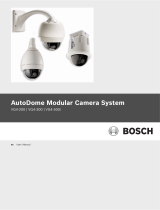Bosch Appliances 0 is a state-of-the-art kitchen appliance that offers a wide range of features to make cooking easier and more enjoyable. With its advanced technology, it can help you create delicious meals with minimal effort.
Bosch Appliances 0 is a state-of-the-art kitchen appliance that offers a wide range of features to make cooking easier and more enjoyable. With its advanced technology, it can help you create delicious meals with minimal effort.



















-
 1
1
-
 2
2
-
 3
3
-
 4
4
-
 5
5
-
 6
6
-
 7
7
-
 8
8
-
 9
9
-
 10
10
-
 11
11
-
 12
12
-
 13
13
-
 14
14
-
 15
15
-
 16
16
-
 17
17
-
 18
18
-
 19
19
-
 20
20
Bosch Appliances 0 User manual
- Category
- Motor vehicle electronics
- Type
- User manual
Bosch Appliances 0 is a state-of-the-art kitchen appliance that offers a wide range of features to make cooking easier and more enjoyable. With its advanced technology, it can help you create delicious meals with minimal effort.
Ask a question and I''ll find the answer in the document
Finding information in a document is now easier with AI
Related papers
-
Bosch Appliances Welding System LBB 3588 User manual
-
Bosch 3922 988 43318 User manual
-
Bosch LBB 4190 User manual
-
Bosch Appliances Home Theater Screen LBB 3584 User manual
-
Bosch Appliances DCN Synoptic Microphone Control User manual
-
Bosch Appliances 2.4 User manual
-
Bosch 8500 User manual
-
Bosch Appliances 8555 User manual
-
Bosch VG5 600 User manual
-
Bosch VJR SERIES User manual
Other documents
-
Bosch CU-304-0510 User manual
-
Eden 501 Operating instructions
-
Listen Technologies CCS 800 User manual
-
Bosch VEZ-211-IWCS Datasheet
-
Shure DIS-CCU Quick start guide
-
VMS TOURING 7500 SERIES User manual
-
 Robert Bosch VG4-200 User manual
Robert Bosch VG4-200 User manual
-
Listen Technologies LBB 3316/10 User manual
-
Listen Technologies DCN-MICS User manual
-
Listen Technologies LBB 400D User manual





















